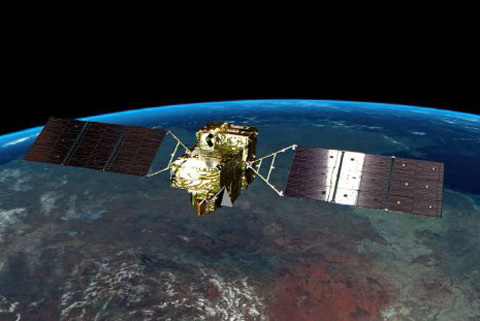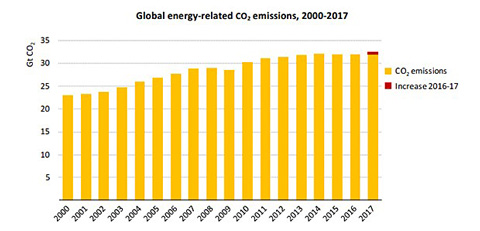News
Successful Launch of GOSAT-2 to Observe Greenhouse Gases Updated in December 2018
On October 29, 13:08 (Japan Standard Time) the H-IIA F40 rocket carrying GOSAT-2 (or Ibuki 2 in Japanese) was launched from the Tanegashima Space Center in Kagoshima prefecture to observe greenhouse gases. Japan Aerospace Agency (JAXA) and Mitsubishi Heavy Industries which took charge of the launch reported that GOSAT-2 was successfully placed into orbit.
GOSAT-2 was co-developed by JAXA and Japan’s National Institute for Environmental Studies (NIES). When GOSAT-2’s solar panels are fully opened, its maximum width measures 16.4 meters and weighs 1.8 tons. It is the successor to the original GOSAT (acronym for Greenhous gases Observing SATellite) which was launched in 2009, and is equipped with a high-performance sensor. GOSAT-2 will monitor carbon dioxide, and methane in addition to carbon monoxide which also triggers greenhouse effect. GOSAT-2 is 8 times more accurate in sensing carbon dioxide. It is circling into orbit at an altitude of 613 kilometers to observe greenhouse gases around the earth. Moreover, GOSAT-2 will monitor the concentration of particulate matter PM2.5, deemed harmful to our health and will keep a close watch on the amount of PM2.5 drifting over to Japan.
The international framework Paris Agreement for the prevention of global warming, aims to reduce global temperature rise to less than 2 degrees, or to keep the temperature rise within 1.5 degrees. Countries participating in the Paris Agreement are obligated to report their greenhouse gas emissions. In this respect, GOSAT-2 can monitor greenhouse gases with great accuracy and is expected to contribute to the overall international challenges to reduce emissions.
According to the International Energy Agency (IEA), CO2 emissions for 2017 has increased by 1.4% to reach 32.5 billion tons. During 2014-2016, the figure remained unchanged but resulted in an unwelcome increase for 2017. IEA says that ongoing efforts are insufficient to realize countermeasures proposed in the Paris Agreement.
In addition to GOSAT-2, two other satellites Stars-AO and KhalifaSat were also loaded on the H-IIA F40 rocket used for the October 29th launch. Stars-AO is the micro-cube satellite co-developed by Tohoku University, Osaka Institute of Technology, Kyushu Institute of Technology, Shizuoka University and Aichi University of Technology. KhalifaSat is United Arab Emirates’ first land observation satellite.









